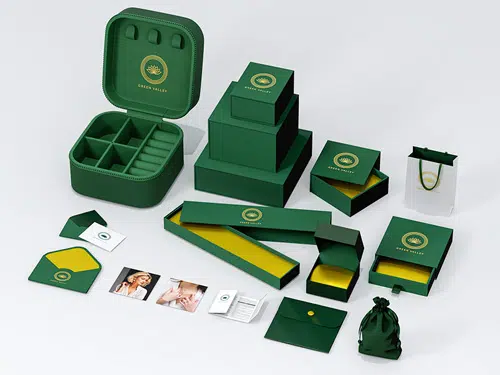Personalization has become the cornerstone of modern packaging strategies, with the customized packaging market projected to reach $52 billion by 2027 according to Smithers Pira research. This explosive growth reflects consumers' increasing desire for unique experiences that make them feel valued. A personalized gift box becomes a sensory journey that engages both sight and touch, creating an emotional connection that standard packaging simply cannot achieve.
When you invest in customized packaging, you're not just wrapping a product—you're telling your brand's story through textures, colors, and finishes. The unboxing experience becomes a moment of anticipation and delight, reinforcing positive brand associations that last far beyond the initial interaction. This attention to detail communicates your company's commitment to excellence, with studies showing that well-designed luxury packaging can increase perceived product value by up to 20%.
For high-value clients and loyalty program members, the packaging should match the exclusivity of the contents. Harvard Business Review research reveals that personalized experience-based loyalty strategies are 50% more effective at improving customer retention than standard programs. Premium finishes like gold foil stamping, embossed logos, or velvet linings transform ordinary boxes into keepsakes that recipients proudly display.
Consider incorporating unexpected elements that delight—magnetic closures that snap satisfyingly, hidden compartments that reveal surprises, or textured papers that beg to be touched. These thoughtful details create memorable unboxing moments that strengthen emotional bonds with your brand. The luxury packaging market has particularly benefited from this trend, with high-end brands reporting increased social media shares when products arrive in Instagram-worthy packaging.
At corporate events and trade shows, your gift box serves as both branding tool and networking catalyst. With 81% of attendees remembering brands associated with gifts received (Event Marketing Institute), your packaging must stand out in a sea of competing messages. Consider practical yet distinctive shapes that differ from standard rectangular boxes—cylinders, pyramids, or origami-inspired designs that spark curiosity.
Interactive elements like QR codes linking to exclusive content or augmented reality features can extend engagement beyond the event. The packaging itself becomes a conversation starter, with clever structural designs or localized artwork that reflects the event's theme or location. Sustainable materials often resonate particularly well at events, demonstrating your environmental commitment while keeping branding visible.
Recent studies show that 79% of consumers keep promotional products for at least six months when presented in quality packaging (PPAI Research). This extended brand exposure makes well-designed corporate gift boxes one of the most cost-effective marketing investments available today.
| Packaging Type | Key Benefits | Ideal Applications |
|---|---|---|
| Luxury Rigid Boxes | Premium perception, durability, high-end finish options | VIP gifts, executive presents, high-value products |
| Eco-Friendly Packaging | Sustainability messaging, modern aesthetic, recyclable | Corporate responsibility programs, eco-conscious brands |
| Interactive Packaging | Enhanced engagement, tech-forward impression | Product launches, tech companies, youth markets |
| Themed Collections | Storytelling potential, seasonal relevance | Holiday gifts, limited editions, special promotions |
The materials you choose for your corporate gift boxes communicate before the recipient even opens the package. Stretched cardboard offers exceptional printability for vibrant brand colors, while uncoated stocks project an organic, artisanal quality. For truly luxury packaging, consider materials like wood veneer, acrylic, or metal accents that create immediate tactile appeal.
Finishes add that final layer of sophistication—spot UV highlighting creates glossy contrasts on matte surfaces, foil stamping delivers metallic brilliance, and embossing adds dimensional texture. These techniques work particularly well for logo treatments or brand elements you want to emphasize. As noted in historical packaging archives like Wikidata's packaging entries, the evolution of finishing techniques has paralleled changing consumer expectations for premium unboxing experiences.
When introducing new products, your packaging must generate immediate excitement and social sharing potential. PR kits destined for influencers and journalists should create that coveted "unboxing moment" that gets captured on camera. Consider structural surprises—boxes that unfold in unexpected ways, hidden compartments, or interactive elements that engage multiple senses.
The packaging for product launches should align perfectly with the item's positioning. A tech gadget might benefit from sleek, minimalist packaging with precise cutouts, while a beauty product could shine in soft-touch boxes with magnetic closures. The key is creating packaging that protects while also amplifying the product's unique selling points through thoughtful design.
Corporate gift boxes containing promotional items represent one of the most versatile marketing tools across industries. Themed collections—like office wellness sets with aromatherapy products or gourmet food samplers—create cohesive gifting experiences that feel more substantial than individual items. Packaging these products together in custom boxes increases perceived value while providing more branding real estate.
When selecting items for promotional boxes, consider usefulness alongside brand alignment. Practical items like power banks or reusable water bottles ensure long-term visibility, while premium versions of everyday objects (like artisanal notebooks or designer pens) reinforce quality associations with your brand. The packaging should complement these items without overwhelming them—clean designs that let the products shine while keeping your branding visible.
Exceptional corporate gift boxes function as silent ambassadors for your brand long after the initial gift exchange. They continue working for your company on office desks, in home displays, and through social media shares. This extended marketing reach makes packaging one of the most effective tools for building brand awareness and loyalty in today's experience-driven economy.
The most successful packaging strategies consider the complete customer journey—from the moment the box arrives at their doorstep through the unboxing experience and eventual reuse or display. By designing with this entire lifecycle in mind, you create packaging that delivers ongoing value while maintaining your brand presence in the customer's daily life. In an era where digital interactions dominate, the tangible quality of beautifully crafted luxury packaging creates meaningful physical connections that digital channels cannot replicate.
